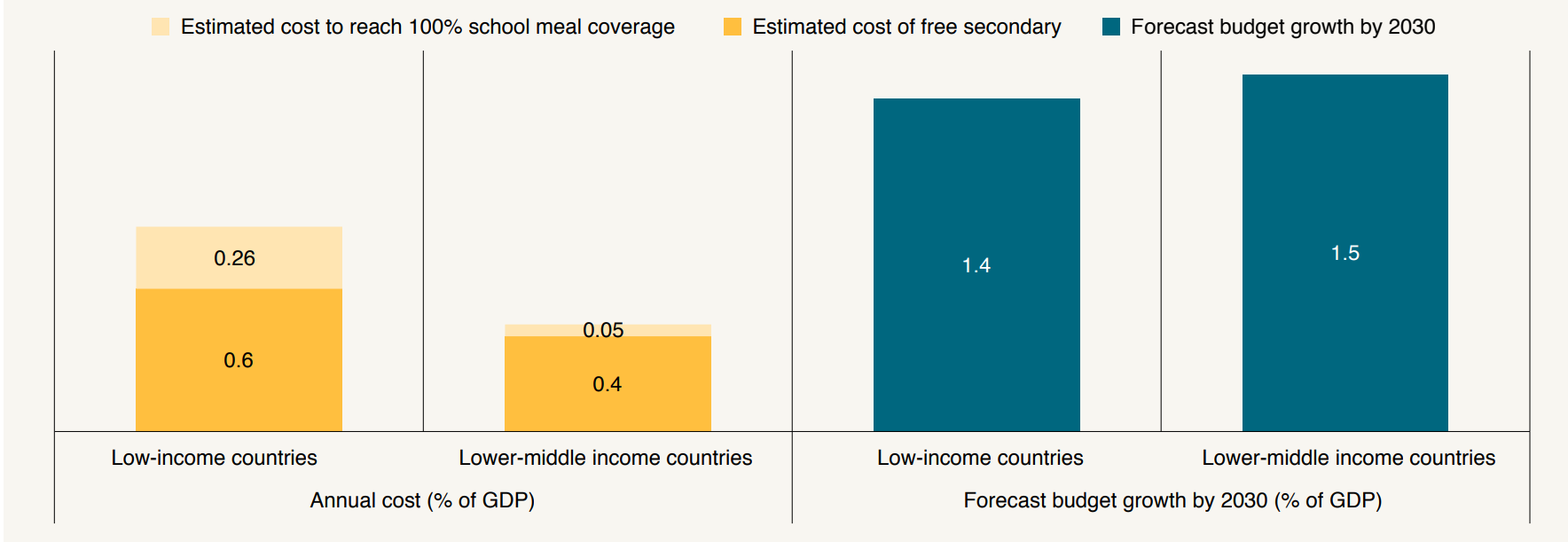Note: This blog post is part of a series in which CGD experts present arguments from “Schooling for All: Feasible Strategies to Achieve Universal Education” and invite (sometimes dissenting) commentary from experts within the global education community.
Suppose you’re the minister of education in a lower-middle income country. It’s budget season. You have a meeting tomorrow with the finance minister to make your case for more education spending. You know she’s skeptical that money is really what’s holding your school system back. The World Bank says that "public spending does not correlate strongly with learning," and "improvements in learning are unlikely when additional resources are allocated like past funding." You’re going to need to persuade her.
So what’s your pitch? Are there shovel-ready investments that your ministry is prepared to roll out next fiscal year, where money is credibly the binding constraint?
Introducing a new CGD report, “Schooling for All: Feasible Strategies to Achieve Universal Education”
Today we’re excited to release a new CGD report which attempts to fill in our hypothetical education minister’s pitch to the finance minister. The six main chapters make the case for (and against) specific public investments in education in low- and lower-middle income countries:
- Chapter 1. What actually works at scale?
- Chapter 2. Feed all the kids
- Chapter 3. The case for free secondary education
- Chapter 4. How much should governments spend on teachers?
- Chapter 5. What public-private partnerships can and can’t do
- Chapter 6. Finance: Ambition meets reality
Each chapter reflects the views of a different set of CGD researchers, and for each topic we’ve invited reactions from external contributors who were promised space to disagree—which many of them did! Over the next couple weeks, we’ll feature a series of posts and (sometimes dissenting) commentaries on each of these topics.
The report highlights policy options that are feasible in two respects: developing countries can afford them, and can realistically implement them
The focus here is purposefully on things that money can fix. One key message of the report is that many promising, cost-effective education programs in the developing world don’t meet that criterion. Beyond mere budget constraints, they often suffer implementation failures or political resistance from teachers that have limited their viability as national policies. So the volume gives special emphasis to policies that have routinely worked at scale in very imperfect government school systems. For instance:
Those things aren’t cheap. But they have the potential to pay high dividends, and ballpark estimates suggest their costs are not entirely out of reach.
The cost of school meals and free secondary schools vs. forecast budget increases

The cost of these ambitious goals is a fraction of projected spending increases. Even fairly conservative budget scenarios imply that the typical low or lower-middle income country will spend an additional 1.5 percent of today’s GDP on education annually by 2030. That is based purely on IMF projections of economic growth extrapolated out to 2030, and the historical relationship between GDP and education spending, per Chapter 6 of the report.
By contrast, the cost of free secondary education is closer to half a percent of GDP in the same countries (chapter 4), and universal free school meals—widely derided as too costly to contemplate in many education policy debates—would cost just a quarter of a percent of GDP in low-income countries and 0.05 percent in lower-middle income countries (chapter 3).
Other policy proposals don’t fare so well, and here’s where the report probably gets more controversial. Chapter 4 presents fairly sobering evidence on the likelihood that big investments in reducing class sizes or raising civil service salaries will move the needle on education outcomes. And chapter 5 reviews the very mixed evidence on public private partnerships for education in low- and lower-middle income countries, with some findings that may surprise even folks familiar with this literature.
Money might not be the binding constraint for everything that matters in education (think about curriculum reform, or improving pedagogical practice). But there is plenty for which it does matter.
CGD blog posts reflect the views of the authors, drawing on prior research and experience in their areas of expertise.
CGD is a nonpartisan, independent organization and does not take institutional positions.